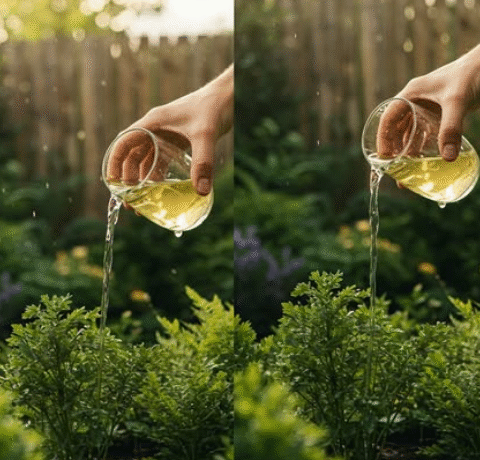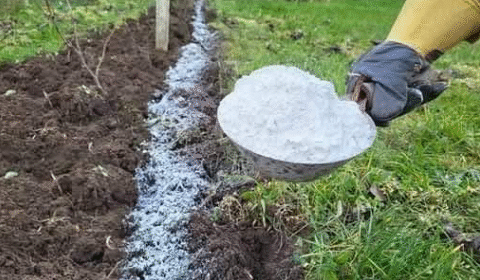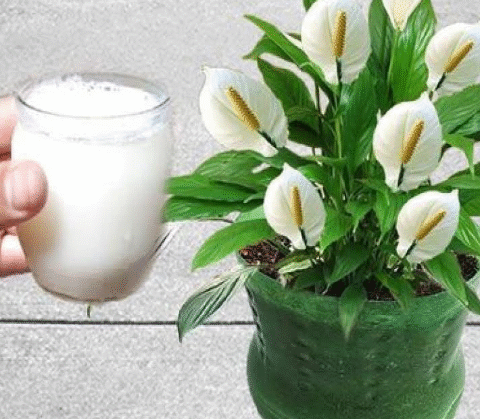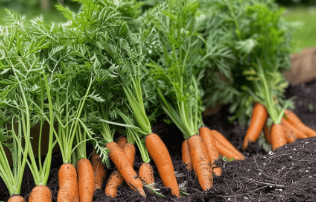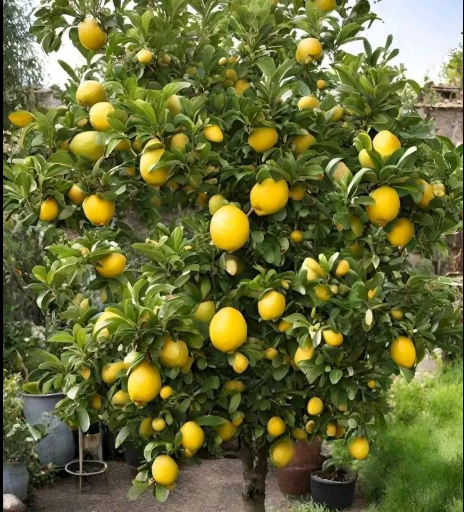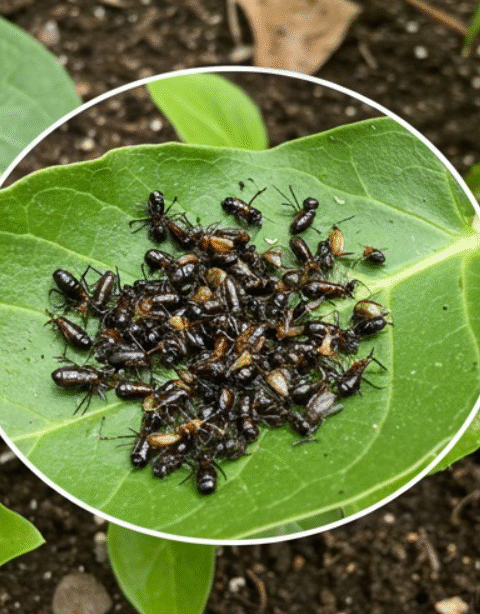7 Essential Gardening Tasks for March: Prepare Your Garden for a Bountiful Spring 🌱
March marks a thrilling time of change for gardeners as the world transitions from winter slumber to the vibrant awakening of spring. With longer daylight hours and rising temperatures, it’s time to shake off the cold and get your garden in shape for the growing season ahead.
Whether you’re a seasoned green thumb or just starting out, here are seven critical gardening tasks to tackle in March. These steps will set your garden up for success and ensure your plants thrive from the very beginning. 🌸🌿
1. Start Seeds Indoors for Early Planting 🌱
March is the perfect month to begin sowing seeds indoors, especially for vegetables and flowers that need a longer growing season to mature.
What to Do:
- Select seeds like tomatoes, peppers, eggplants, basil, and lettuce.
- Use seed trays or small pots filled with seed-starting mix (lightweight and well-draining).
- Keep trays in a sunny window or under grow lights for 12-16 hours a day.
- Water gently and keep the soil consistently moist but not waterlogged.
- Transplant seedlings to larger containers once they develop true leaves.
Why This Matters:
- Gives your plants a head start before outdoor planting.
- Improves root development for healthier transplants.
- Extends your harvest by starting the growing season early.
2. Prune Trees, Shrubs, and Roses 🌳
Before new growth appears, March is the ideal time to prune dormant woody plants and shape your garden’s structure.
What to Do:
- Remove dead, damaged, or diseased branches.
- Trim overgrown limbs to encourage airflow and sunlight.
- Prune fruit trees to boost yields and manage height.
- Cut back roses to 12–18 inches above ground to stimulate flowering.
Why This Matters:
- Reduces disease and pest issues.
- Improves plant shape, health, and productivity.
- Encourages more vibrant blooms and fruits.
3. Prepare Garden Beds for Spring Planting 🛠️
Soil health is the backbone of a productive garden. March is the time to wake up your beds and get them ready for planting.
What to Do:
- Remove dead plants, fallen leaves, and invasive weeds.
- Loosen the soil using a fork or tiller to aerate it.
- Incorporate compost, aged manure, or organic matter.
- Test soil pH with a kit and adjust with lime or sulfur.
- Apply an all-purpose fertilizer to recharge nutrients.
Why This Matters:
- Improves soil texture and fertility.
- Encourages deep root growth and water retention.
- Discourages early weed growth by disturbing weed seeds.
4. Plant Cool-Season Vegetables and Flowers 🥕🌷
With the ground beginning to warm, hardy crops and flowers can go directly into the soil.
What to Do:
- Sow seeds for kale, spinach, radishes, carrots, and peas directly outdoors.
- Plant onion sets, garlic cloves, and early potatoes.
- Plant pansies, violas, snapdragons, and calendula for spring color.
- Use row covers or frost cloths to protect from surprise freezes.
Why This Matters:
- Gets a jump-start on spring harvests.
- Cool weather improves flavor in crops like lettuce and radishes.
- Provides ground cover and reduces soil erosion.
5. Mulch and Weed Garden Beds 🍂
Early weeding and mulching prevent problems later in the season and keep your garden looking clean and healthy.
What to Do:
- Apply a 2–3 inch layer of mulch around trees, shrubs, and garden beds.
- Remove any early-sprouting weeds by hand.
- Use landscape fabric under mulch in high-weed areas.
- Keep mulch a few inches away from plant stems to prevent rot.
Why This Matters:
- Suppresses weed germination by blocking light.
- Conserves soil moisture and reduces watering frequency.
- Moderates soil temperature and prevents erosion.
6. Start or Refresh Your Compost Pile ♻️
Composting is a sustainable way to create your own garden gold. March is a perfect time to begin or reinvigorate your compost bin.
What to Do:
- Gather “greens” like veggie scraps, coffee grounds, and grass clippings.
- Balance with “browns” like dry leaves, shredded paper, and sawdust.
- Turn your pile every 2–3 weeks to aerate and speed decomposition.
- Keep it moist—like a wrung-out sponge—for microbial activity.
Why This Matters:
- Creates free, organic fertilizer that improves soil texture and fertility.
- Reduces waste and helps the environment.
- Encourages beneficial organisms in your garden.
7. Inspect and Maintain Gardening Tools 🧰
Well-maintained tools are safer, more effective, and make gardening more enjoyable.
What to Do:
- Clean tools with soap and water; disinfect with a bleach solution if needed.
- Sharpen blades on pruners, shears, and shovels.
- Oil moving parts to prevent rust and squeaks.
- Replace broken handles, damaged hoses, or torn gloves.
Why This Matters:
- Prevents the spread of disease from plant to plant.
- Makes tasks faster and more precise.
- Saves money by extending tool life.
Expert Insights 🌼
Dr. Leila Nour, horticultural scientist at the Garden Ecology Institute, advises: “March prep work may not feel glamorous, but it’s the most impactful month for gardeners. Healthy soil and seedlings started now will make your entire season easier.”
Prof. Mark Benson, soil health expert from Green Acres University, adds: “Gardeners should treat soil like a living system. Enriching it with compost and proper pH balancing in March creates the healthiest environment for roots to thrive.”
Garden Prep at a Glance: March Checklist 📝
| Task | Action Steps | Why It’s Important |
|---|---|---|
| Seed Starting | Sow indoors: tomatoes, peppers, lettuce | Gives plants a head start |
| Pruning | Trim trees, roses, fruit trees | Removes disease, shapes growth |
| Soil Prep | Loosen soil, compost, test pH | Builds healthy foundation |
| Cool-Season Planting | Plant lettuce, kale, peas, pansies | Maximizes early spring growth |
| Weed & Mulch | Apply mulch, pull young weeds | Prevents weed takeovers |
| Composting | Turn pile, balance greens/browns | Creates rich, free fertilizer |
| Tool Maintenance | Clean, sharpen, oil, replace broken tools | Makes gardening smoother |
10 Frequently Asked Questions About March Gardening ❓
- Can I start all seeds indoors in March?
Start long-season vegetables like tomatoes, peppers, and eggplants. Wait for warmer months to start heat-loving crops like melons outdoors. - Is it too late to prune trees in March?
No—early March is ideal. Avoid pruning once buds swell and break. - How do I test soil pH?
Use a home test kit from a garden center or send a sample to a local cooperative extension service. - Which flowers are best to plant now?
Pansies, violas, snapdragons, calendula, and primroses all handle spring chill well. - How thick should I apply mulch?
2–3 inches is ideal. Avoid piling it against plant stems or trunks. - How long before compost is ready?
With regular turning, it may take 2–3 months. Slower piles may take 6–12 months. - Why sharpen gardening tools?
Sharp tools make cleaner cuts, reduce strain on plants, and prevent tearing or infection. - What’s the best compost ratio?
A 2:1 ratio of browns to greens (carbon to nitrogen) keeps the pile balanced and odor-free. - Can I use lawn clippings in compost?
Yes—but mix with browns and avoid if lawn was treated with herbicides. - Should I fertilize now?
Yes—especially when prepping beds. Choose a balanced organic fertilizer if unsure of your soil’s needs.
Final Thoughts
March is the month that sets the stage for your garden’s entire year. By starting seeds, pruning, enriching your soil, planting early crops, mulching, composting, and maintaining tools, you’ll build a strong foundation for lush growth and rewarding harvests.
Take this opportunity to reconnect with the earth, shake off the winter blues, and breathe life into your landscape. Happy gardening! 🌼🌿

